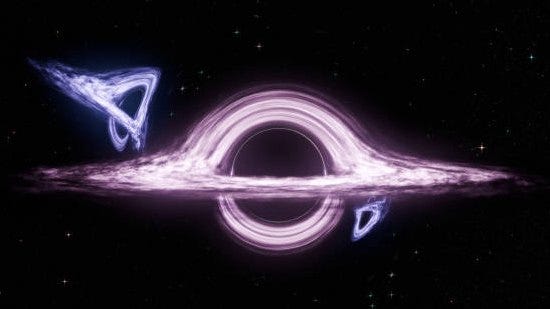
Black hole Sagittarius A* influences galaxy formation
Sagittarius A* is a supermassive black hole located at the center of our galaxy.
Unbranded – Noteworthy
A team of scientists has used the James Webb Space Telescope to peer through the veil of dust surrounding a distant supermassive black hole, revealing that the energy around the hole comes from jets of gas colliding with each other at nearly the speed of light.
The Webb telescope, the most powerful ever built, has targeted the supermassive black hole at the centre of a galaxy known as ESO 428-G14 about 70 million light-years away. According to Space.com.
As with our home galaxy, the Milky Way, there is a supermassive black hole at its center, devouring any matter in its path. Black hole It is a region with such strong gravity that nothing, not even light, can escape the black hole’s grip.
The team pointed the telescope at a hot cloud of dust and gas swirling around the black hole. What they saw revealed that the energy in the cloud was creating jets of gas that were colliding with each other at the speed of light, heating up the dust veil. The team found that the dust near the black hole was spreading along the gas jets, which may be responsible for the shape of the dust that scientists see around the black hole.
The gas jets surrounding the supermassive black hole could extend anywhere from a few light-years to beyond the range of their home galaxy, according to Webb telescope results.
Scientists previously thought that the energy heating the dust clouds came from radiation generated by the black hole itself.
“We didn’t expect to see radio drones causing this kind of damage,” David Rosario, a senior lecturer at Newcastle University who co-authored the study, told a news conference. “And yet, here they are!” Press release from the university Tuesday.
The discovery came from a project called the Galactic Activity, Phase, and Outflow Survey (GATOS), which aims to uncover the secrets of supermassive black holes at the center of galaxies. The team published its findings in the journal Science Monthly Notices of the Royal Astronomical Society Tuesday.
Pictures we have never seen before: NASA releases stunning images of nebulae and galaxies in space
Supermassive black holes at the center of almost every galaxy devour planets and stars.
Scientists now believe that nearly all galaxies contain supermassive black holes, also called active galactic nuclei, or AGN, at their center. These black holes grow as they consume planets, stars, gas, and even other black holes that get in their way.
Supermassive black holes also feed on the cloud of rotating particles and gas surrounding them, also called Accumulation disc.
Light cannot escape a black hole, making it impossible to see directly through a telescope. But scientists can identify a black hole by looking at these clouds of gas.
The Webb telescope uses infrared waves to capture information about these clouds, allowing scientists to peer into the center of the galaxy.
Can you fall into a black hole? NASA simulation provides answer
Supermassive black holes, the largest type of black hole, have a mass more than a million times that of our Sun. According to NASAResearchers believe that these supermassive black holes may have formed alongside their parent galaxy. The first supermassive black holes likely formed shortly after the birth of the universe in the Big Bang.

“Beer aficionado. Gamer. Alcohol fanatic. Evil food trailblazer. Avid bacon maven.”
